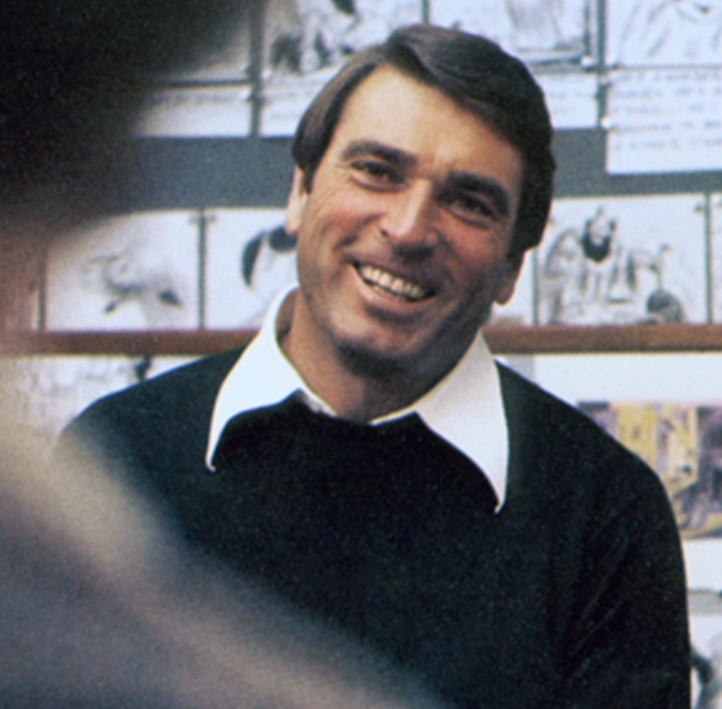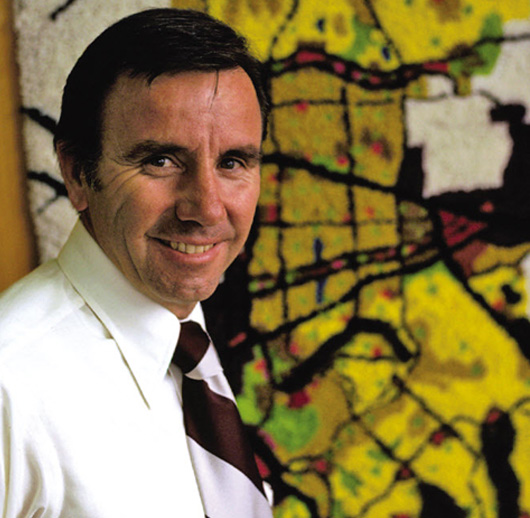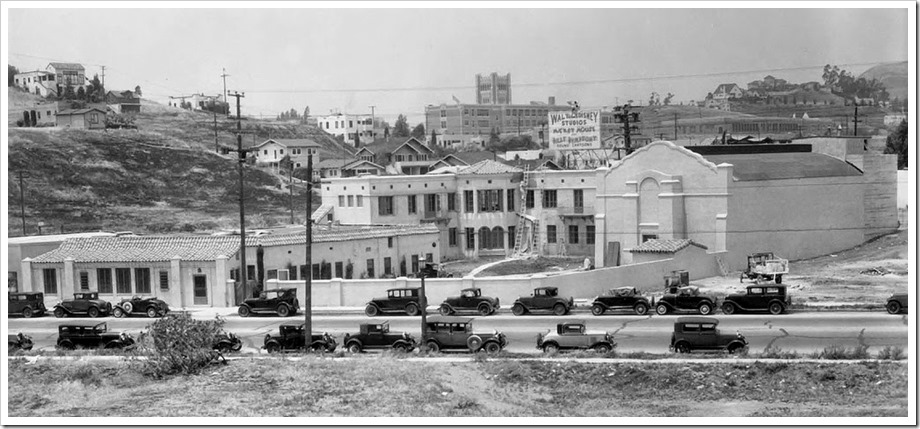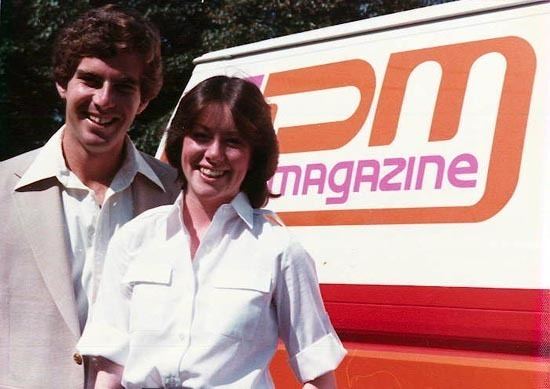Chapter 14: Times of Change, Times of Troubles
Excerpt from The King is Dead: The Walt Disney Company After Walt Disney, an Unauthorized History by Sue Donym and Arman N. Said
With the opening of Tokyo Disneyland accomplished in April of 1983, E. Cardon “Card” Walker stepped down as Chairman of the Board for Walt Disney Productions. It was a career that began in the mail room and progressed up through the ranks of Production (he was a “Walt man”) until, upon the death of Walt Disney, he became one member of the “troika” that succeeded Walt, alongside Roy O. Disney and Donn Tatum. Through sheer brute force of personality, he pushed Tatum aside after Roy O.’s death to become the undisputed leader of Disney. His reign was one of “what would Walt do?”, a static business model whose management style, animation style, production style, and operations style had hardly changed from the 1960s. The company he left behind was practically undifferentiable from the one he inherited.
And now Ron Miller, son-in-law of Walt Disney, would be his chosen heir, just as he was sure Walt had intended. In his own mind, Walker was a caretaker, not a successor. He’d seen Walt’s vision enacted, even the techno-futurist EPCOT, though not in exactly the form that Walt envisioned. Now it was time for Walt’s family to take back the reigns. Ron, alas, was not quite ready. The man was clever and had some bold ideas, but he was shy, self-effacing, and lacked the type of take-charge leadership generally expected in a CEO. The board was reluctant to hand the keys to the kingdom to Miller. He’d need help.
Ron Miller c.1980 (image source “laughingplace.com”)
Walker tapped one of the board members, Ray Watson, the former head of the Irvine Company, to replace him as Chairman. Watson was a real estate mogul, which, Walker thought, made him perfect to take the increasingly parks-driven company forward. He convinced Watson to step up as interim Chairman, at least until Miller was “ready”. Walker, meanwhile, would remain on both the Board of Directors and the Executive Committee, ensuring “quality control” and safeguarding “Walt’s vision”.
Ray Watson c.1980 (image source “D23.com”)
Ray Watson, meanwhile, expected the job of Chairman to be relatively simple. He just had to act as a shepherd for Miller for the next couple of years and then hand off the reigns. What he received would be the most challenging and stressful years of his life.
First off, he soon discovered that there was no business plan. None. The Disney company had a thousand creative balls in the air at any given time, but had no cohesive strategy for when each would launch or how to fund them. Second, company overhead was shocking. Rather than simply hire producers, directors, or actors to perform a specific job as needed, the way most studios at the time did, Disney liked to put them under long term contract, an echo of the “Studio System” of old. This meant that the payroll was swollen with idle employees.
The studios, which Watson had hardly visited while serving on the board, were now revealed to be a place where business shut down at lunch. The only place where the offices weren’t empty by 1 PM seemed to be wherever Jim Henson was working, which was largely the animation department at the moment (
The Black Cauldron was entering into full swing at this point). By contrast, wherever Henson was working was a hurricane of creative chaos, Henson the calm eye at the center of the storm[1].
Ron Miller, on the other hand, was a challenge for Watson. He was tall, good looking, friendly, and had some bold new ideas, but he utterly lacked the business understanding to see them properly executed. He was poor with numbers and he lacked the public speaking ability to inspire confidence in board members or investors. He was good with, and to, his employees for the most part, but was unsure of himself when difficult decisions had to be made[2]. Watson soon came to realize that he would need to become the de facto CEO, which gave him pause.
Watson knew nothing about running a production studio. His entire career was built on real estate development and sales. Watson soon realized that he would need to cultivate a working relationship with Jim Henson. Henson wasn’t exactly the ideal businessman (he, like Walt before him, put artistic achievement well ahead of profit) but he at least had a good business sense. He could read a spreadsheet and create (and follow) a budget. He surrounded himself with people like David Lazer and Al Gottesman who did understand the details of the business and legal aspects, and then actually listened to them. And on top of all of that, Henson “spoke creative”. He could communicate with artists, writers, costume designers, actors, directors, performers, engineers, set designers, and makeup artists on their own terms. He knew the difference between felt and velvet, the difference between “blend” and “blush”, and the difference between a wide-angle lens and a fish-eye. He knew terms like “dolly zoom”, “hemstitch”, “servomotor”, “cel”, “back-beat”, and even “foundation” in the contexts of both set construction and makeup application. It was a language as alien to Watson as Swahili.
Watson would get his chance to work with Henson on three new attraction projects:
The Dark Crystal: A Journey through Thra (a dark water ride debuting at Tokyo Disney), as well as
Journey into the Imagination and
Future-Probe, two new track rides debuting at EPCOT. Their first order of business was coming up with a better name for this last attraction, which had unfortunate medical connotations. Eventually, the pavilion would gain the name
Horizons. The ride inside,
A Look to the Horizon, would become an extension of the classic Disney
Carousel of Progress ride that debuted at the 1964 World’s Fair, only this time looking into the future as 1983 saw it.
Journey into the Imagination would feature a whimsical, Verne & Wells inspired literal “flight of fantasy” with Professor Dreamfinder and his dragon Figment. Jim Henson’s son Brian and “Creature Shop” designer Faz Fazakas would play critical roles in making the motions of the audio-animatronic figures as fluid and realistic as possible for all three projects.
Watson found that he could work well with Henson, who was as modest and self-effacing as Miller, but also quietly confident. The biggest challenges were Henson’s unwillingness to face confrontation and his utter disinterest in the mundane day-to-day management of personnel. “Ray, I came [to Disney] so that someone else could deal with that stuff,” Henson once told him. Henson instead delegated personnel issues down the chain and relied heavily on Tom Wilhite, David Lazer, or Bernie Brillstein to manage the “people wrangling”.
But in all, Watson found Henson to be a valuable asset, his unwitting “man inside”. Not only did Henson work well with the creative aspects of both the “Studio Side” and “Attractions Side” of the company, but he was increasingly close to Ron Miller and could be used as an inside track to figuring out Miller’s hidden thoughts. The biggest risk of this approach would be potentially alienating Outdoor Entertainment President Dick Nunis and Studio Vice President Tom Wilhite, both of whom felt slighted by Henson’s sudden rise to prominence in the company. Wilhite in particular saw Henson’s direct involvement in the studio productions, particularly live action productions, as honing in on his turf. Henson for his part seemed to openly get along well with both men, utterly oblivious to their simmering jealousy. Watson would need to defuse that potential time bomb, and fast.
The Hyperion Avenue Studio, 1931 (Image source “findingwalt.com”)
Ron Miller himself gave Watson the pathway to deal with Wilhite: Hyperion Pictures[3], named for the “2701 Hyperion Avenue” address of the old Disney Studios location in Hollywood. Ron Miller had been pushing the idea for Hyperion, a studio focused on adult-oriented pictures, for years. Walker had always quashed the plan. But Hyperion was the type of bold new ideas Disney needed, Watson felt, and it also offered a near-term political solution, given the current state of affairs. Working with Miller, Henson, and Wilhite, Watson oversaw the founding and trademark of Hyperion Pictures. He then had Miller surprise Wilhite at the Grand Opening that May by formally announcing that Tom Wilhite would become President of the new studio[4]. It came with a spot on the Executive Committee.
Wilhite, of course, was ecstatic. Henson, who knew the secret ahead of time, was genuinely happy for him and smiled and clapped loudly. In fact, when Watson had first approached Henson about the Hyperion idea and asked him point blank who he thought should head the new label, Henson said “Tom” without a moment’s hesitation. After this, Wilhite’s simmering sense of injustice largely fizzled out and he and Henson developed a good working relationship.
CCO Jim Henson, meanwhile, would assume the new title of President of Walt Disney Studios, controlling the Walt Disney Motion Pictures, Walt Disney Animation, and Walt Disney Music divisions, and would soon absorb Walt Disney Television when Alan Wagner left his position as President of The Disney Channel in 1984 to found his own network, Boardwalk Entertainment.
The larger question, however, was what to with Dick Nunis, whose ambition was on full display.
* * *
Disney Launches New Studio for Grown-Ups
The Hollywood Reporter, May 3rd, 1983
Today Walt Disney Productions announced the official grand opening of
Hyperion Pictures, a new production label that will focus on content aimed at adults rather than children. Former studio Vice President Thomas Wilhite, a long-time Disney veteran, was named President of the new studio, which will remain under the larger organization of Walt Disney Productions.
Logo based upon this (Image source “thinglink.com”)
“I am indeed proud and happy to announce that my friend Tom Wilhite will be President of this new studio,” announced a camera-shy Ron Miller, company CEO. “Tom has been a visionary asset to my father’s company and, under his leadership, I am certain that Hyperion will fly high.”
Disney’s Chief Creative Officer and new President of Disney Studios Jim Henson later added, “Tom’s very bright and hard working. He and I have worked very well together over the past couple of years and I know that he’ll do a great job.”
Hyperion’s first picture will be the nature drama
Never Cry Wolf[5], produced in partnership with
Amarok Productions. It is projected for a fall 1983 release.
[1] This is the go-to metaphor for Jim Henson’s productions in every account I read. He let the creatives run wild around him, yet somehow kept everything together, focused(ish), and moving forward. The role of Kermit on
The Muppet Show was more metatextual than you think.
[2] I base all of this off of contemporary accounts in
Disney War,
Storming the Magic Kingdom, and other sources.
[3] The example of the Fantasia Films label and the specific office politics of this timeline have driven the creation of the new adult-oriented studio earlier than in our timeline, which in our timeline only came nearly a year later, after a long series of studies, consultations, focus groups, and branding exercises. The name from our timeline,
Touchstone Pictures, came out of one of these focus groups.
[4] Playing with irony here. In our timeline Wilhite was fired by Disney in 1984 with the management shakeup and went on to create
Hyperion Pictures himself. Among the studio’s productions was an animated film of
Brave Little Toaster, which John Lassiter always wanted to produce as a CG feature.
[5] The first and only “Disney Production” to feature nudity in our timeline.







